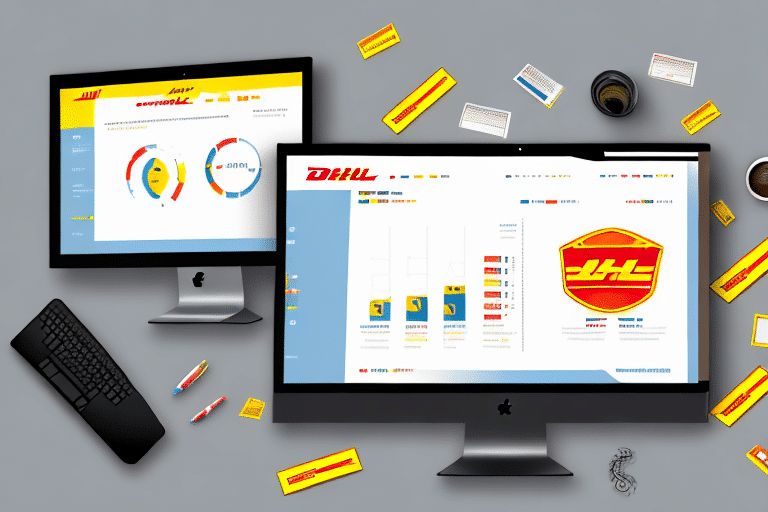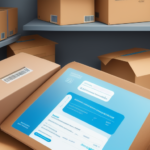Benefits of Using DHL eCommerce for Small Businesses
DHL eCommerce stands out as a leading provider in courier and shipping services, boasting a network that extends to over 220 countries and territories worldwide. According to recent industry reports, DHL eCommerce controls approximately 15% of the global eCommerce shipping market, underscoring its significant reach and reliability.
Affordable Rates and Fast Delivery: DHL eCommerce offers competitive shipping rates that are particularly beneficial for small businesses looking to minimize costs without compromising on delivery speed. With options for both domestic and international shipping, businesses can ensure timely deliveries, enhancing customer satisfaction.
Value-Added Services
DHL eCommerce provides a suite of value-added services tailored to meet the diverse needs of small businesses:
- Parcel Insurance: Protects shipments against loss or damage, providing peace of mind for both businesses and customers.
- Customs Clearance: Simplifies the complexities of international shipping, ensuring packages clear customs efficiently and reach their destinations without unnecessary delays.
- Return Management Solutions: Streamlines the returns process, making it easier for customers to return items and for businesses to handle refunds or exchanges seamlessly.
Integrating DHL eCommerce with Wave Accounting
Integrating DHL eCommerce with Wave Accounting can significantly enhance your business's financial management by synchronizing shipping data with your accounting system.
Creating a DHL eCommerce Account
To begin, create an account on the DHL eCommerce website. After registration, log in and generate an eCommerce ID by providing essential details such as your business name, contact information, and preferred payment method.
Connecting to Wave Accounting
Once your DHL eCommerce account is established, integrate it with Wave Accounting by following these steps:
- Log in to your Wave Accounting account.
- Navigate to the Sales tab and select Shipping.
- Choose DHL eCommerce from the list of available shipping providers.
- Enter your DHL eCommerce user ID and password to establish the connection.
This integration allows for automatic synchronization of shipping data, reducing manual entry and minimizing errors.
Optimizing Your DHL eCommerce Settings for Wave Accounting
To ensure a seamless integration between DHL eCommerce and Wave Accounting, optimizing your settings is crucial. This optimization facilitates accurate data transfer and enhances overall operational efficiency.
Setting Up API Integration
Access the API settings in your DHL eCommerce account under Account Settings > Integration > API Settings. Ensure that your API credentials are correctly entered in Wave Accounting to enable smooth data exchange.
Ensuring Accurate Shipping Rates
Verify that the shipping rates configured in DHL eCommerce match those in Wave Accounting. Accurate rates are essential for correct financial reporting and for ensuring that customers are billed appropriately for shipping costs.
Streamlining Order Fulfillment
Automate your order fulfillment process by enabling automatic order imports and syncing shipping details with Wave Accounting. This automation reduces the risk of manual entry errors and accelerates order processing times.
Troubleshooting Common Integration Issues
Despite a generally smooth integration process, certain issues may arise when connecting DHL eCommerce with Wave Accounting. Addressing these common problems promptly can prevent disruptions in your operations.
API and Billing Issues
Incorrect API settings or billing information can hinder the integration process. Double-check your API credentials and billing details in both platforms. If issues persist, contact DHL eCommerce or Wave Accounting support for assistance.
Address Mismatches
Mismatched shipping and billing addresses can lead to delivery delays and billing discrepancies. Ensure that the addresses entered in DHL eCommerce are consistent with those in Wave Accounting to avoid such problems.
Tracking Problems
If you encounter issues with tracking shipments through Wave Accounting, verify that the tracking numbers are correctly entered. Persistent tracking issues may require you to reach out to DHL eCommerce support for further assistance.
Managing DHL eCommerce Orders in Wave Accounting
Effective management of DHL eCommerce orders within Wave Accounting can streamline your financial processes and enhance order tracking capabilities.
Customizing Sales Settings
Within Wave Accounting, customize your sales settings to automate transaction types, payment methods, and shipping details. This customization ensures consistent and efficient processing of orders.
Automating Shipping Information
Leverage the integration to automatically import shipping and tracking information for each order. Automating this process reduces manual entry errors and saves valuable time.
Best Practices for Synchronizing DHL eCommerce and Wave Accounting
Maintaining synchronization between DHL eCommerce and Wave Accounting is vital for accurate financial tracking and reporting.
Regularly Updating Settings
Regularly review and update your integration settings to accommodate any changes in your business operations or updates from DHL eCommerce and Wave Accounting. Keeping settings current ensures continued integration efficiency.
Account Reconciliation
Perform regular account reconciliations by comparing transactions in DHL eCommerce with those in Wave Accounting. This practice helps identify and rectify discrepancies promptly, ensuring financial accuracy.
Enhancing Your Business's Financial Management with DHL eCommerce and Wave Accounting
Integrating DHL eCommerce with Wave Accounting not only streamlines shipping and accounting processes but also contributes to the overall financial health of your business.
Cost Savings on Shipping
By leveraging DHL eCommerce's competitive shipping rates, businesses can significantly reduce shipping expenses. These savings can be passed on to customers through lower shipping fees or reinvested into other areas of the business.
Improving Customer Service
Accurate and timely shipping information enhances customer satisfaction. With DHL eCommerce’s advanced tracking technology, customers can monitor their orders in real-time, fostering trust and encouraging repeat business.
Leveraging Wave Accounting Features
Wave Accounting offers a range of features such as automatic bank connections, invoicing, and receipt scanning that complement the DHL eCommerce integration. Utilizing these features can further simplify financial management and reduce the risk of errors in your financial records.
Conclusion
Connecting, optimizing, and managing DHL eCommerce with Wave Accounting provides small businesses with a powerful combination for efficient eCommerce and financial management. By following the step-by-step guide and implementing best practices, businesses can streamline their operations, reduce costs, and enhance customer satisfaction.
Additionally, Wave Accounting offers access to a team of accounting professionals and a wealth of resources to support informed financial decision-making. Embracing this integration is a strategic move that can drive your business towards greater operational efficiency and financial success.






















